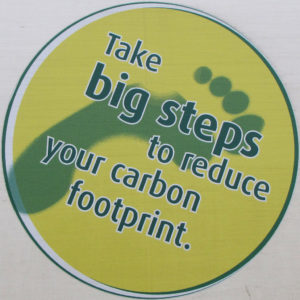One Step In The Right Direction – The Progression Of Our Carbon Footprint
Throughout the duration of COP26, terms like “Carbon Footprint” have been plastered everywhere for the world to see, but have we ever truly stopped to ask ourselves what does this term actually means?
Carbon Footprint
To put it simply, think of your carbon footprint as a mark that we as every single person leaves on the world much like on a snowy winter’s morning – the footprint you would leave at your doorstep – but in this case the mark that we are leaving on our planet is causing great danger for our environment.
The total amount of green house gases including carbon dioxide and methane that are generated by our actions are the causes of this very serious problem that we at COP26 are looking to solve! (Fun Fact: Methane can also be produced by cows very own gas, strange right?)
Our Daily Routine
In order to find ways that we can all do our part we must look back to 2019’s COP25 and figure out the reasons behind the upsetting fact that our carbon footprint has more than doubled since this event. Examples of the biggest causes in your own daily routine that are having a negative affect on climate change are:
- Your home energy use and waste production. This includes how much electricity, natural gas, and other fuels you use and where they come from, as well as whether you recycle or send your waste to landfill as the buildup of all of this rubbish is a major cause of producing these harmful gases.
- Travel. Your carbon footprint will very different depending on whether or not you have car or a motorbike and if it’s electric, as well as how often you use it, also, how many times you use public transport and any flights you take as the more times you use it the more you are negatively contributing.
- Your diet. The types of food you eat and where it comes from can play a big part in your carbon footprint. The more energy-intensive (the more energy it takes) to produce and deliver the food to you, the worse for the environment it typically is.
- Your shopping habits. Another reason our carbon footprint has doubled is because of how often we buy new products such as electronics (our phones, tablets, laptops etc.), household objects and clothing. We as a nation have a habit of throwing away and replacing our devices for the latest trendy models, which can and will contribute massively to the problem over time as well as how they’re made in the first place.
All of these reasons above are why our carbon footprint hasn’t gotten any smaller since COP’s last discussions, therefore, we can clearly see the importance of bringing up these issues at COP26 and finding ways of sorting this mess out.
This should be motivation for a change, however, many people aren’t aware of what they can do to help be a part of the solution to stop producing these harmful gases that affect our atmosphere.
CEN is here to give you the top 5 ways that you can force this change in your own daily life:

- Use less water:
It takes a lot of energy to deliver water to our homes. It’s actually uses so much energy to purely heat it up for you once it’s there. So, by using less, you can help the environment and lower your carbon footprint. Try turning off the taps when brushing your teeth, having short showers rather than baths, and only boiling the water you need. - Change your diet:
The food we eat can have a huge impact on the environment. For example, meat and dairy products need a lot of land, water and energy to produce. They also create a lot of methane,( the greenhouse gas mentioned earlier! Remember?). Even food shipped from foreign countries uses a lot more resources than if you were to just buy your food locally! So, by eating fewer animal products, especially red meat, (or choosing a plant-based diet) and shopping for locally sourced food, you can make a big difference. Why not support your local farmers’ market?
- Cycle or walk any chance that you can get:
Cycling and walking are two of the most environmentally friendly ways to travel. And, not only are they good for the planet, but they’re also good for your health. Therefore, If you can choose to cycle or walk you’ll be thankful for a fun new way of going about your day. But most importantly your planet will be thanking you.
- Turning your lights off as much as you can:
Powering empty rooms is a huge energy drain. By making sure that you turn off lights and appliances when they’re not being used, you can make sure you’re not wasting any power.
You could even ask to install automatic, movement-sensing lights and energy-saving LED bulbs to help cut down on this terrible power wastage.
- Raise Awareness:
Your school, for example, may not know much about things like greenhouse gases, carbon footprints, or climate change. You can change that by sharing this article that you have taken the time to read so that your friends can all learn as much as you have. Things like school projects and fundraising events can help to educate pupils and their families about just how important protecting the environment really is. This can and will definitely help those around you to reduce their footprints just as much as your own.
See it really is that simple. Help us all by taking our advice and hopefully we will see a difference that we can be proud of by COP27.
Sources:
https://www.futurelearn.com/info/blog/how-to-reduce-your-carbon-footprint-tips
https://environmental-conscience.com/causes-effects-solutions-for-carbon-footprint/
https://www.oxfam.org/en/press-releases/carbon-emissions-richest-1-percent-more-double-emissions-poorest-half-humanity


